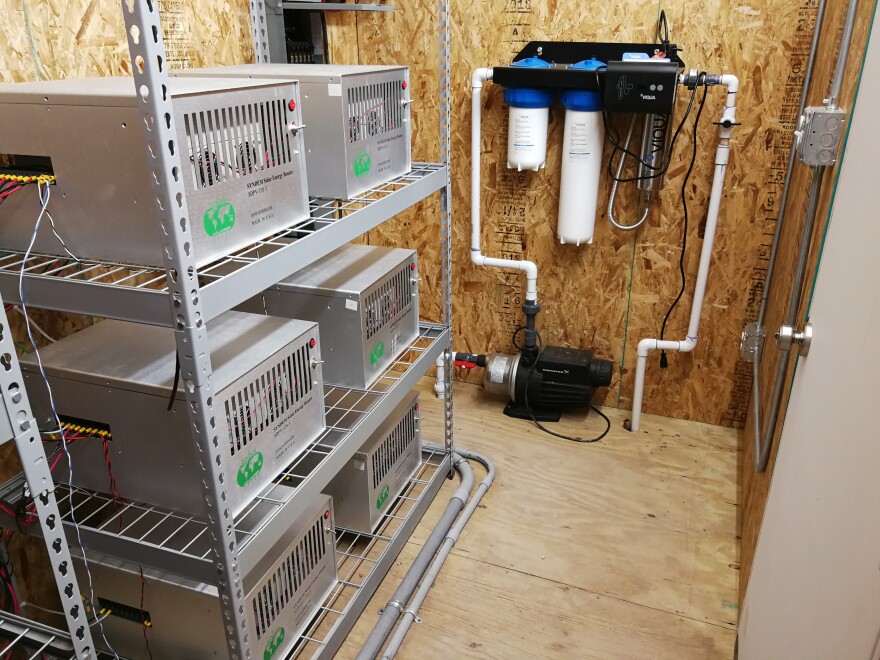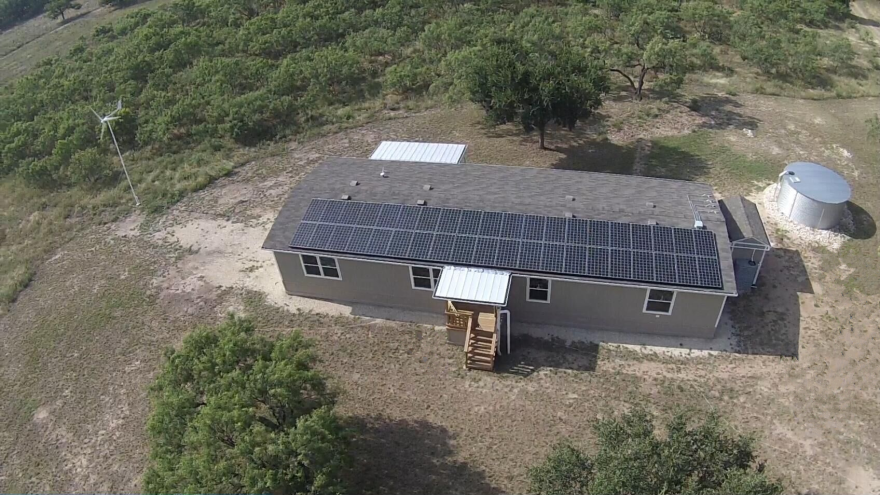Texas has long had a reputation for its harsh weather and environment. A reputation that has only been solidified in the past several years, with deadly natural disasters across the state.
Texas is on its own independent power grid, separate from the rest of the U.S. It is the only continental state that does not have an interconnected power grid. Energy generated in Texas, stays in Texas. And that statewide system is what most people use to get power to their homes and businesses.
Many Texans are also on centralized water systems. Here in Lubbock, most city dwellers use municipal water and municipal pipes. But many in more rural areas use private well water or other decentralized water systems.
Dr. Brian Ancell is a professor of atmospheric science in the Department of Geosciences at Texas Tech University. He says that with water shortages and rising costs, centralized systems might not be the most sustainable model.
“Those types of systems are becoming more vulnerable as population grows and climate changes,” he said. “So right now, things are great, water and power are maybe relatively affordable, but they're always there. But in the future, natural disasters are expected to increase, population growth, the grid might not be able to handle that.”
Ancell is a collaborator on the Home Utility Management System, or HUMS, a decentralized, individual system of water and energy.
“It almost sounds like going backwards, but individual homes will be gathering their own water, power at their home,” he said. “We have ways to do that now. With rain harvest off of the roof, they put it in a water storage tank on the property. Solar panels can get power and be stored in batteries.”
Some of those systems are expensive at the moment, but the project is about developing systems to work with people for the future.

The patented HUMS system tracks water and power storage and usage in the household.
As an atmospheric scientist, Ancell works with weather forecasting, so the system can advise the user based on upcoming conditions, similar to peak-demand times on electricity.
“So if we know that it's going to rain, we know more water is coming in, then the system actually advises people to use the water at will,” he explained. “If it knows that a drought is coming, it'll say, okay, you need to start conserving now if you want this water that you've collected to last a certain amount of time. So it kind of advises them on how to sustain that locally collected resource.”
HUMS households would have a connection to the centralized grid to be used if necessary, but with less reliance and eventually less stress on the wider system.
Ancell said the system relies on a “personalized sense of ownership.”
“I think it's a powerful motivator to sustain your own resource that you've collected on your own property,” he remarked.
The project has been in the works for the past five to six years at the Texas Tech Yano River Field Station. The project involves Tech’s departments of Geosciences; Civil, Environmental, and Construction Engineering; Electrical and Computer Engineering; and Sociology, Anthropology and Social Work.
It also has partnerships outside of the university. As it focuses on disadvantaged neighborhoods and sustainable housing, HUMS has partnered with local groups like Lubbock Compact, East Lubbock Resident-Owned Business Initiative (EL ROBI), Lubbock Habitat for Humanity, and Open Door.
Ancell said that Lubbock Habitat for Humanity is a key part of building homes and integrating the technology, as well as working with other local chapters to explore the benefits in different climates. Habitat prioritizes sustainability and the way the systems can help those they serve.
Open Door is also interested in the project, should it receive the funding for practical application. Ancell said the organization would use a HUMS building as a hub for water supplies and a shelter against dangerous weather.
The project is also partnered with the City of San Antonio and nonprofit Build San Antonio Green.
The team explored the City of Lubbock as a potential collaboration, but San Antonio provided a larger urban area to test and a more enthusiastic response from city partners.
Build San Antonio Green (BSAG) constructs and assists with weather ready, energy efficient homes.
Executive director Anita Ledbetter has been with BSAG for more than 20 years. She explained that green homes are better insulated, more energy efficient, and less expensive.
“And you know what? It's going to keep you warmer in the winter, and it's going to keep you cooler in the summer,” Ledbetter said.
BSAG has official partnerships with Bexar County, the City of San Antonio, and San Antonio’s municipal energy provider.
The organization has built almost 30,000 houses in San Antonio, many of them starter homes. It also provides solar education and assistance, to help people determine if solar energy would work for their home or business.
Ledbetter said that weather readiness is something that everyday people and families can participate in. Between land, water, and energy, Texans are familiar with resource management, a lot of which happens at the local level. It is a field that Ledbetter said thrives in the state of Texas where people can connect, share information, and work together.
“These are changing times,” she said. “But there's only one thing that's certain, and that is, you never know what's going to happen with that Texas weather. So why not be prepared?”
The HUMS project spoke to Ledbetter and BSAG because of its practicality: solving real problems for real people. Ledbetter said that weather readiness is a priority for many Texans and something she and Dr. Ancell want to help facilitate.
“You also have to make things easy for people, you know,” she stressed. “So that's us trying to make the world a better place, one little house at a time, by making somebody's life maybe a little easier that day. Maybe they have a lower bill. Maybe they felt a little more assured in the storm. All those things, they matter, they add up.”
Such a practical, multidisciplinary project requires a lot of money. Prior to sweeping layoffs and funding cuts from the federal government, the HUMS team had applied for a grant from the Environmental Protection Agency. Ancell said he and his team members were never told that the project was not funded, they simply started hearing about federal cuts in the news.
“Part of this was ensuring a stable and clean water supply for disadvantaged neighborhoods in particular, and that was a priority, I think that was not continued with the current administration,” he said.
The grant proposed would retrofit Home Utility Management Systems into 20 existing homes. Lubbock Compact would act as a partner to find households willing to participate and EL ROBI would train workers on installing the systems.
Having not heard from the EPA, it's onto the next applications and exploring new avenues for funding the next phase of the project.
One application it has in review with the National Science Foundation is a scaled-down version of the EPA proposal. Instead of installing systems in existing houses, they would test the technology with people in a new home – which would be achieved through collaboration with Habitat for Humanity.
Outside of the team’s academic comfort zone, Ancell said they have considered looking to the private sector.
As it stands, the lab is still up and running and providing demonstrations for future funding proposals.
This story is part of a series examining the local impact of federal funding cuts. Read about The Mesquite Mile, another project bridging the gap between Texas homeowners and their environment here. Learn more about how spending affects rural programs here and who advocates for nonprofits with policy makers here.


